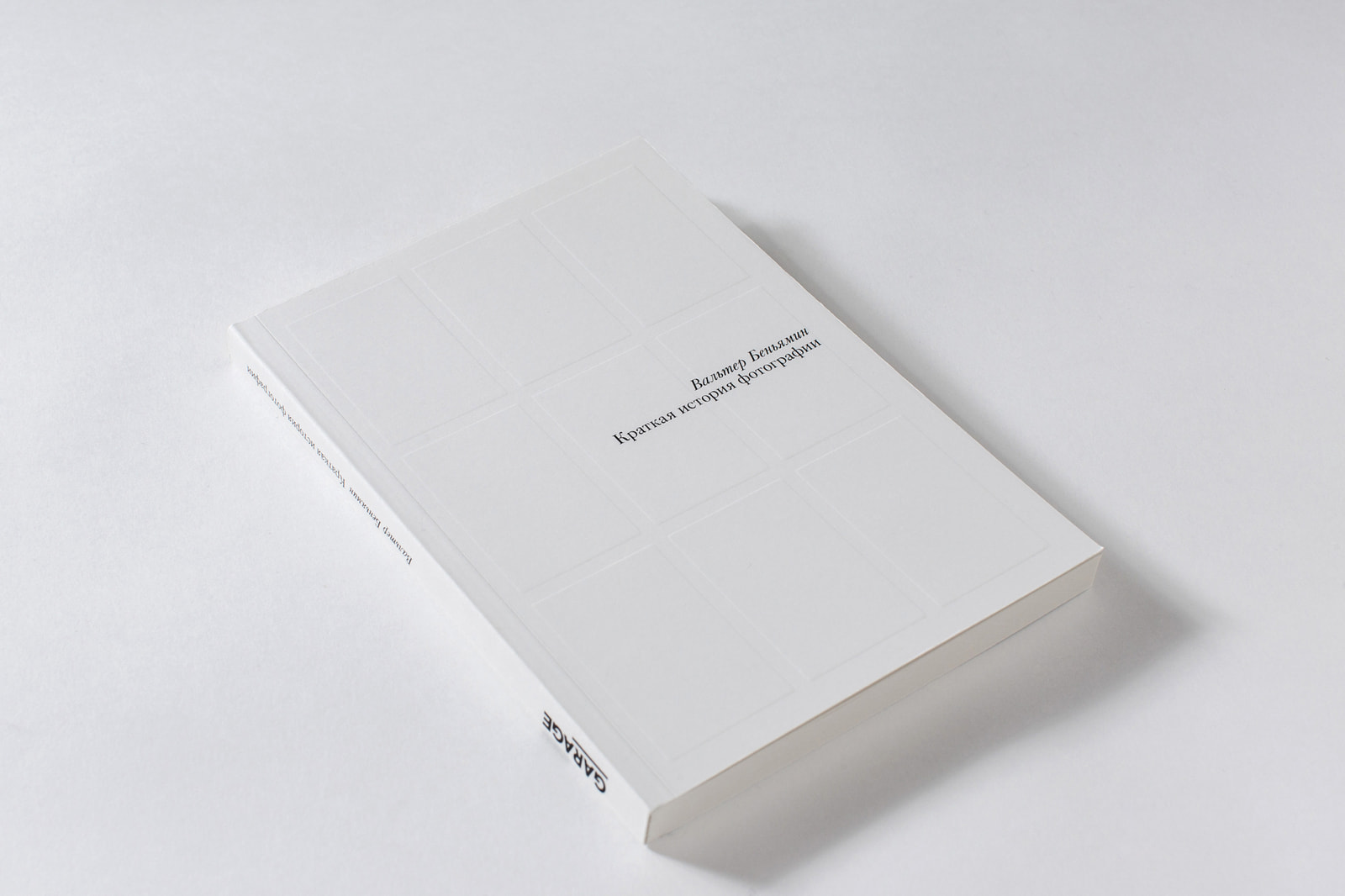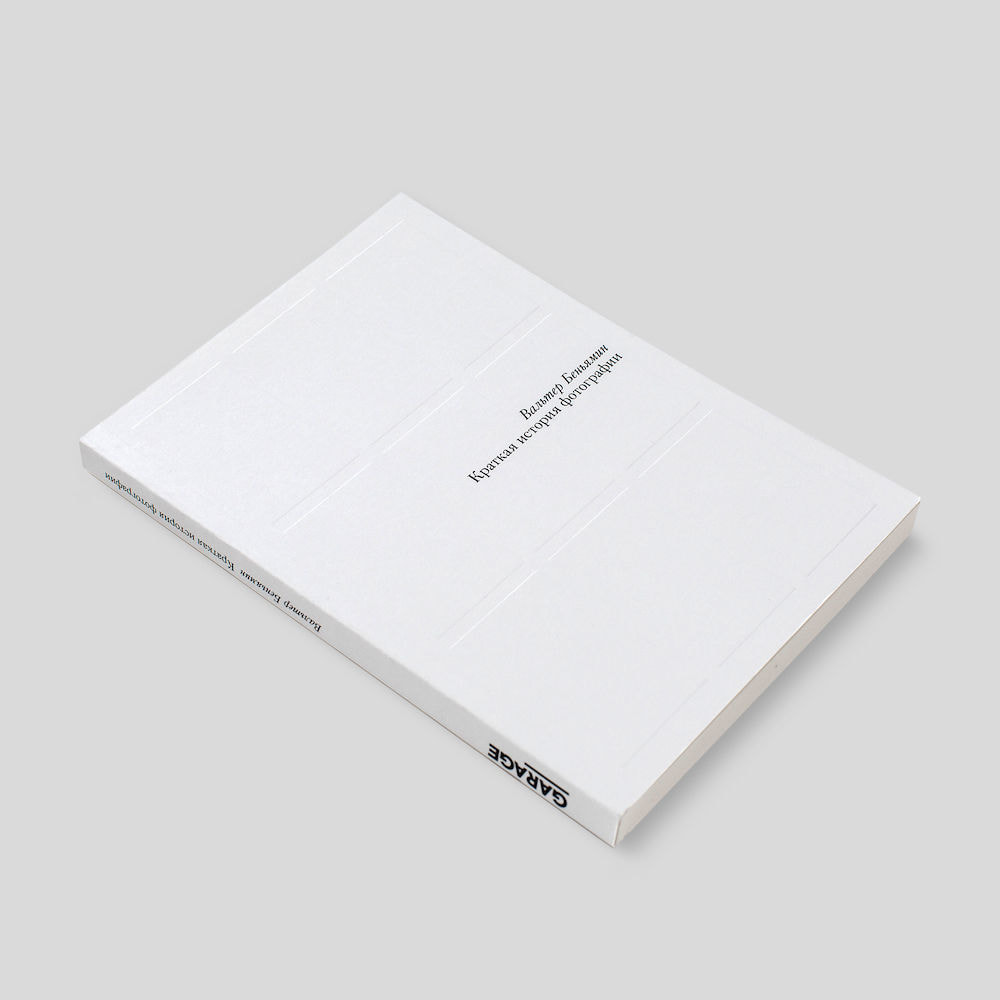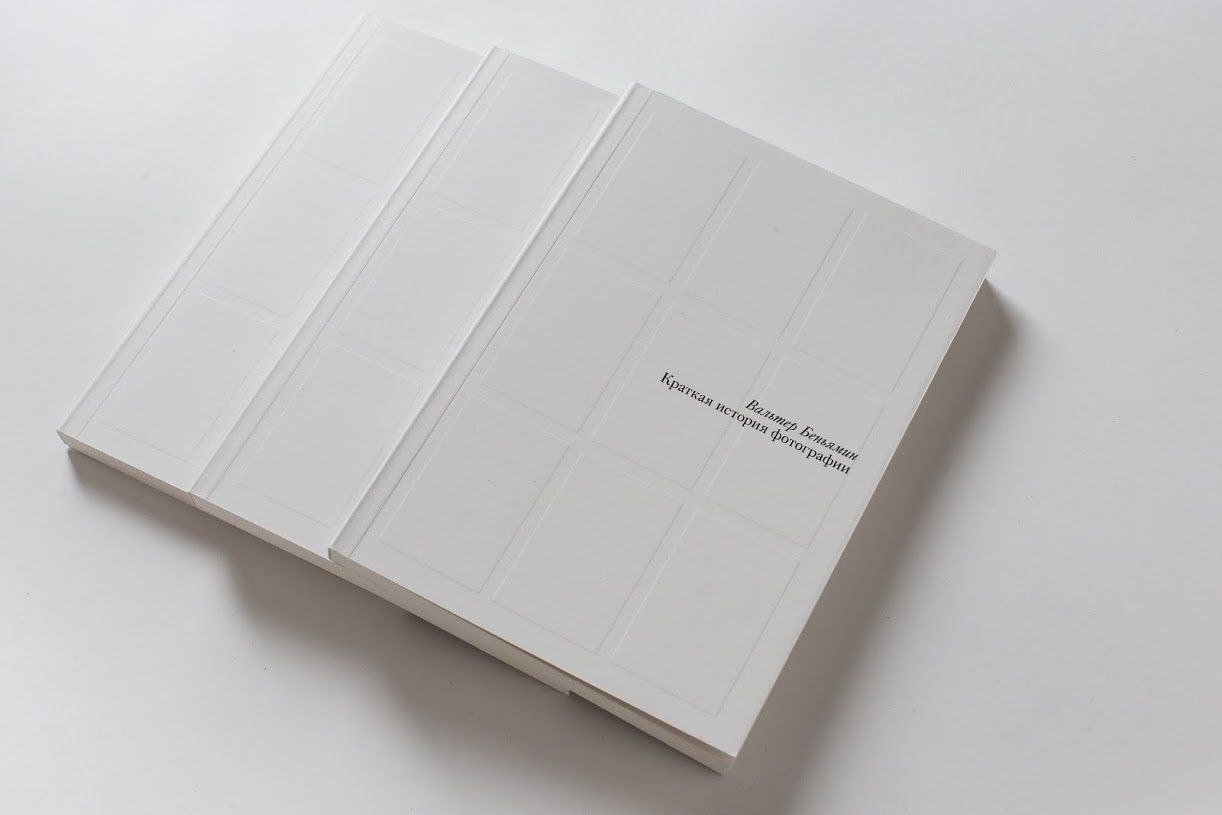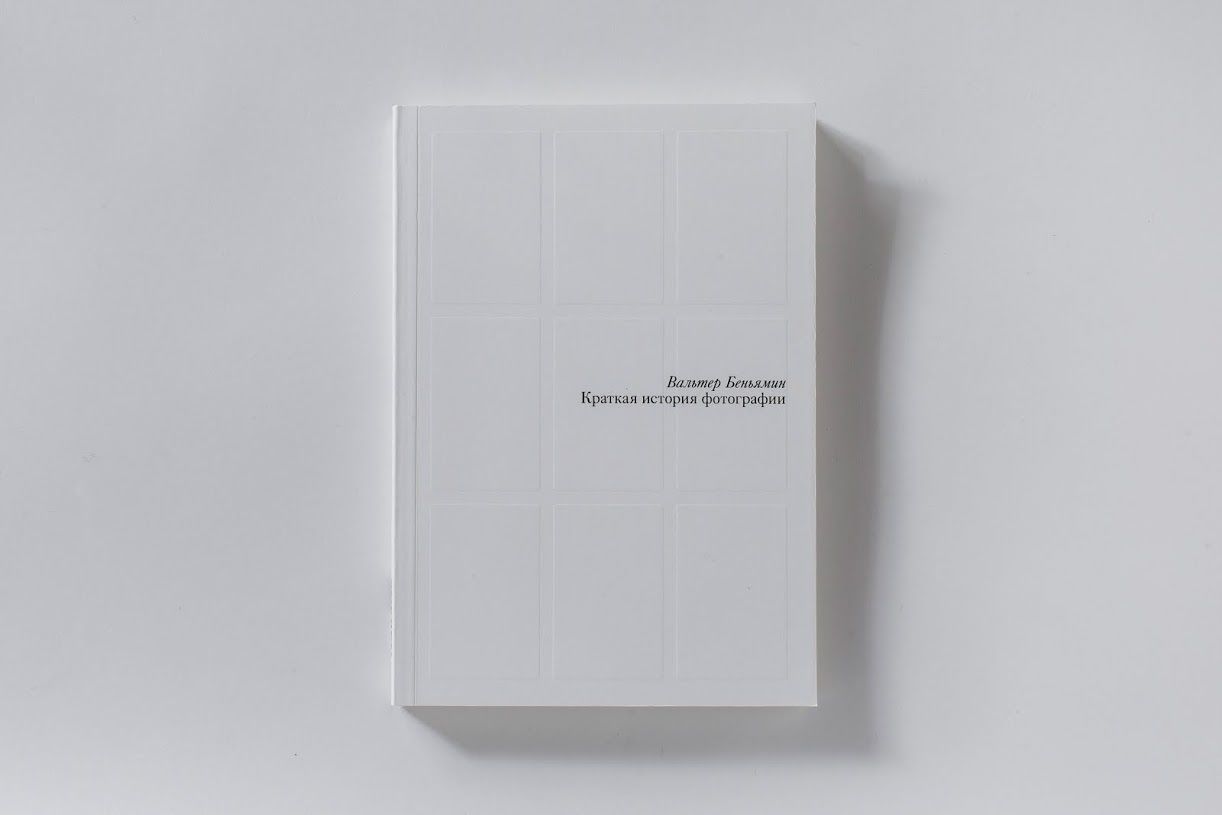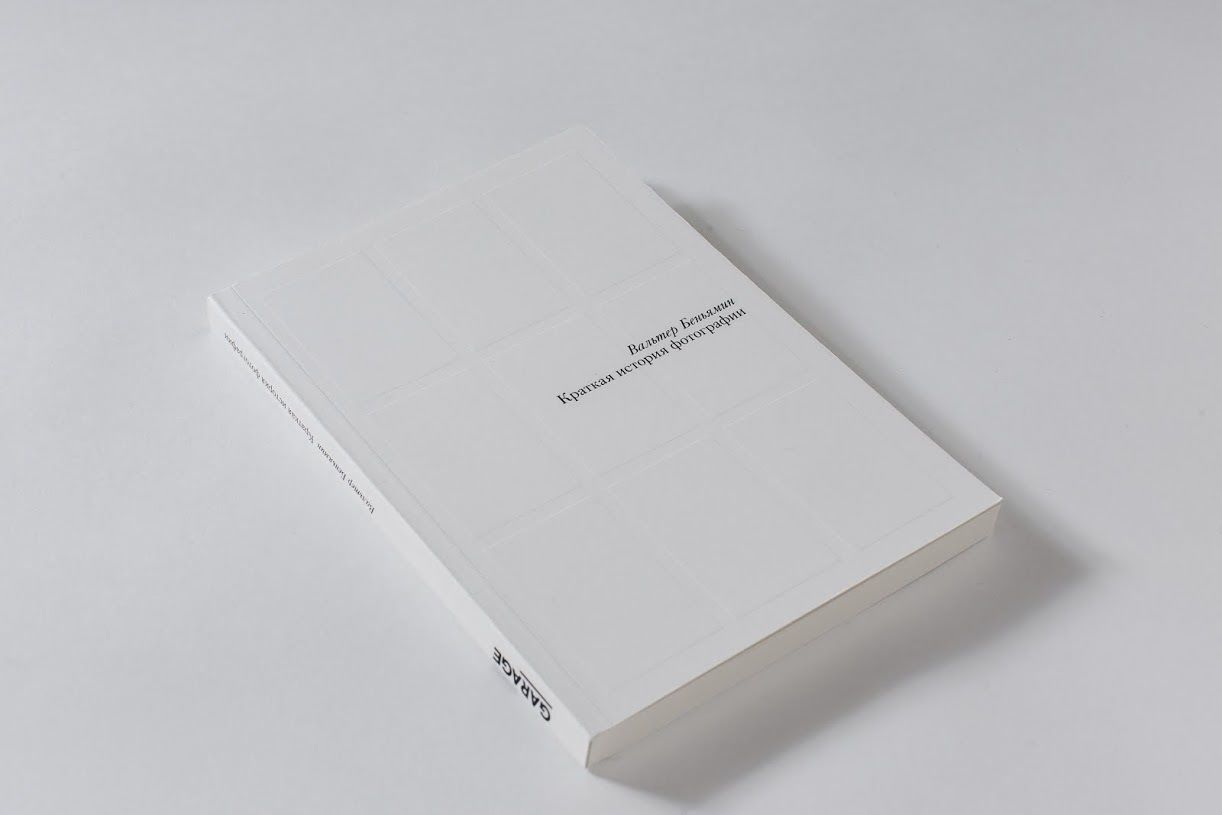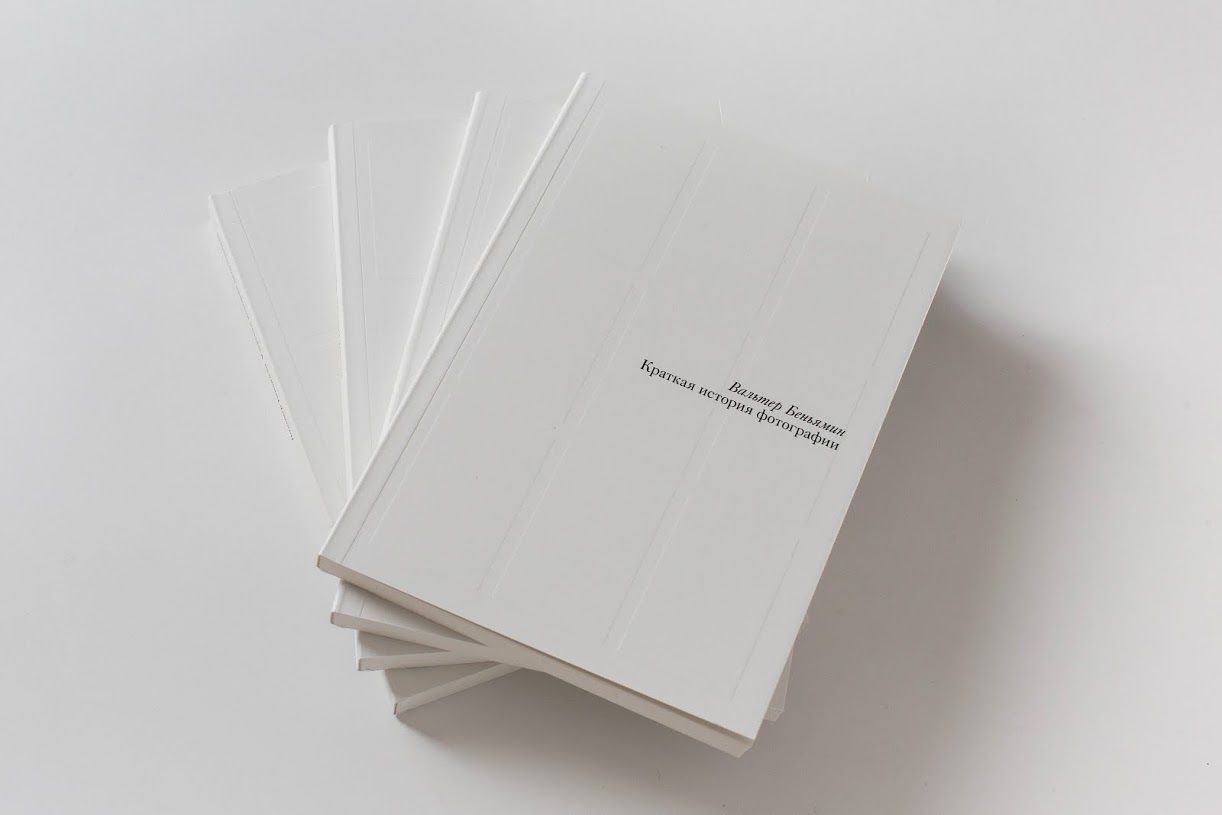A new edition of the book, a joint publication between Garage Museum of Contemporary Art and Ad Marginem Press in 2013.
The anthology includes three works by German philosopher, critic, writer, and translator Walter Benjamin, which speculate on photography: A Short History of Photography; Paris, Capital of the Nineteenth Century; and The Work of Art in the Age of Mechanical Reproduction. The afterword is supplied by well-known photography historian Vladimir Levashov.
In his essay A Short History of Photography (1931), Walter Benjamin did not seek to chronicle the development of photography; rather, he contemplated the important consequences of the invention of photography for the global culture: "At about the same time as the formation of the technology for reproduction, the conception of great works was changing. One can no longer view them as the productions of individuals; they have become collective images, so powerful that capacity to assimilate them is related to the condition of reducing them in size." The essay introduced several concepts that Benjamin would later elaborate in his most famous piece, The Work of Art in the Age of Mechanical Reproduction - in particular, the notion of "aura". The author provided insight into the influence that the early photography technology had exerted on the formation of its aura as well as into separate genres and individual artists such as David Octavius Hill, August Sander and Eugene Atget (the latter viewed by Benjamin as a precursor to Surrealism).
In his essay Paris, Capital of the Nineteenth Century (1935), Benjamin studied new relationships between art and technology during the era of rapid technological progress. Apart from visual art, he discussed architecture, which had seen the first applications of construction in iron, the invention of panoramic paintings, and the formation of the entertainment industry at World Exhibitions in the 19th century. According to Benjamin, the emergence of photography brought about the renewal of artistic language and intensified formal explorations: "As the scope of communications increased, the informational importance of painting diminished. The latter began, in reaction to photography, firstly to emphasize the coloured elements of the image. As Impressionism gave way to Cubism, painting created for itself a broader domain, into which for the time being photography could not follow it."
Photography, in turn, from the middle of the 19th century onwards, had enormously extended its marketability and, in Benjamin's opinion, eventually separated from art to become a commodity. Attempting to isolate art from the development of technology and prevent the former's surrender to the market, non-conformists created the conception of the total work of art and rallied around the banner of L'art pour l'art.
The anthology concludes with Walter Benjamin's most acclaimed publication, The Work of Art in the Age of Mechanical Reproduction (1936). In this essay, he evolved his own term "aura," the "here and now" of an art object, its unique existence in space and time, which defines its authenticity. Reproduction destroys the aura and depreciates the object's historical value and authority. According to Benjamin, the destruction of the aura was socially driven; the process resulted from two circumstances related to the increasing significance of the masses, characterised by the "ardent ... bent toward overcoming the uniqueness of every reality by accepting its reproduction ... [The] ‘sense of the universal equality of things' has increased to such a degree that [the masses] extract it even from a unique object by means of reproduction."
A committed Marxist philosopher, Benjamin was fascinated by the ever-increasing influence of the masses on the role of art: "The mass is a matrix from which all traditional behavior toward works of art issues today in a new form. Quantity has been transmuted into quality. The greatly increased mass of participants has produced a change in the mode of participation." The masses seek collective distraction, whereas art demands individual concentration from the spectator - hence the rising popularity of cinema at the expense of painting.
Benjamin emphasized that art's functions tended to change over time. For instance, he pointed out that mechanical reproduction emancipated the works of art from their parasitical dependence on ritual and removed the semblance of art's autonomy forever. It was photographic technology that reversed "the total function of art ... Instead of being based on ritual, it begins to be based on another practice - politics." In this regard, particularly interesting are the author's thoughts on the fundamental differences between Fascism and Communism in treating politics and art - especially if we agree with him that all efforts to render politics aesthetic culminate in war.
